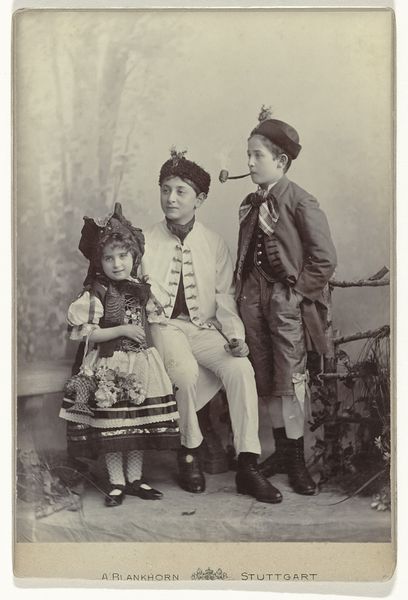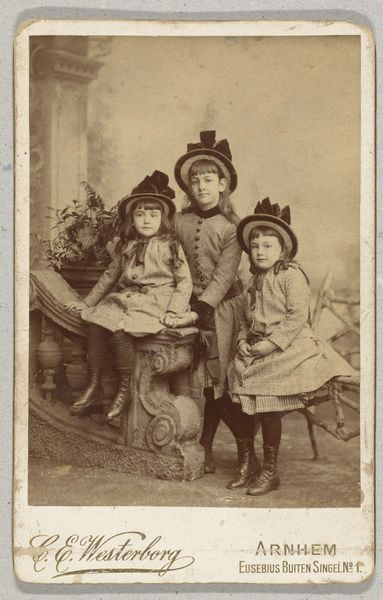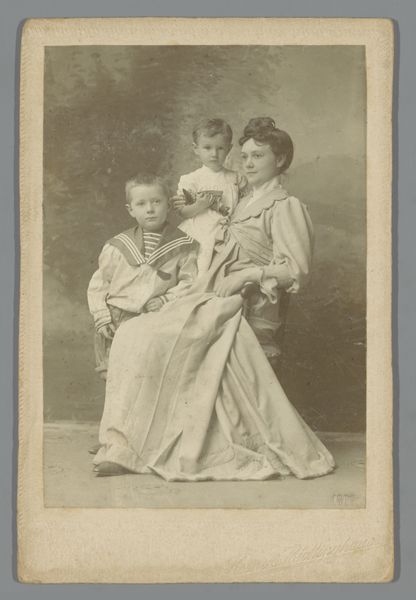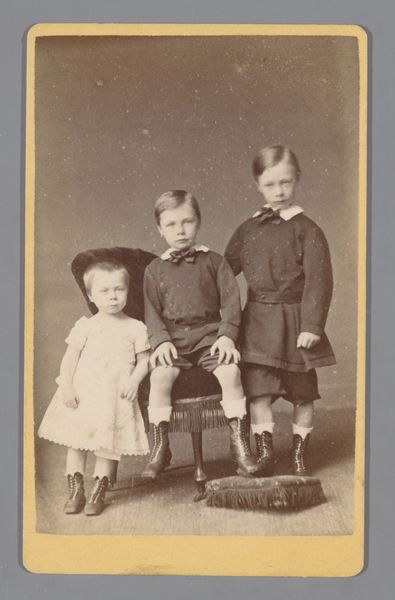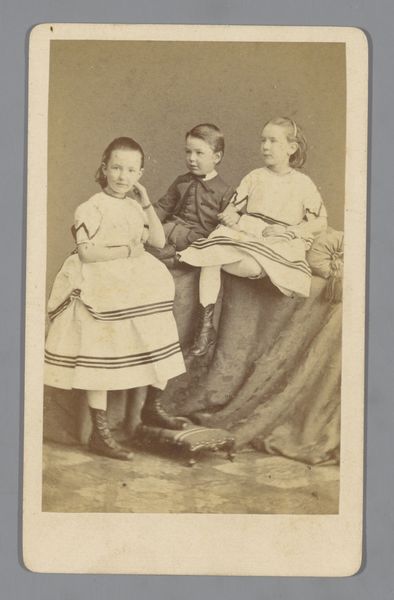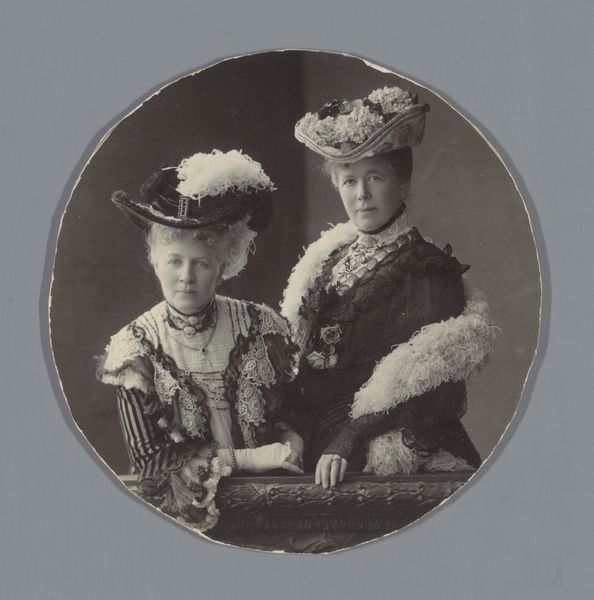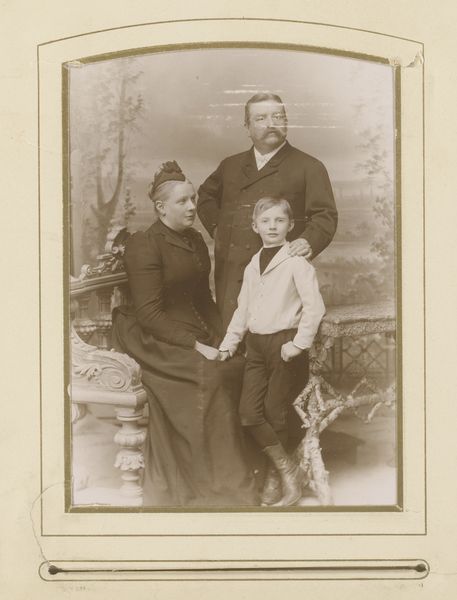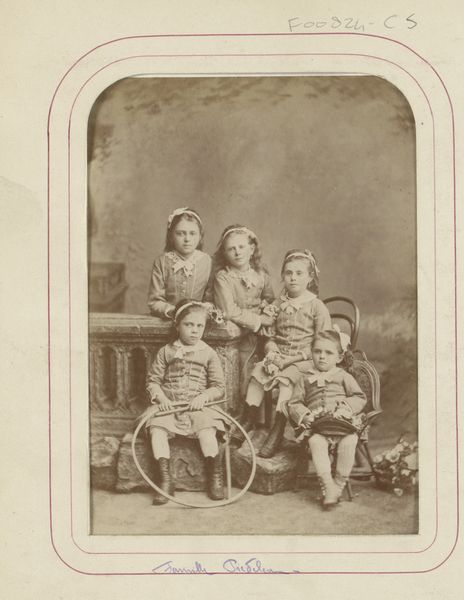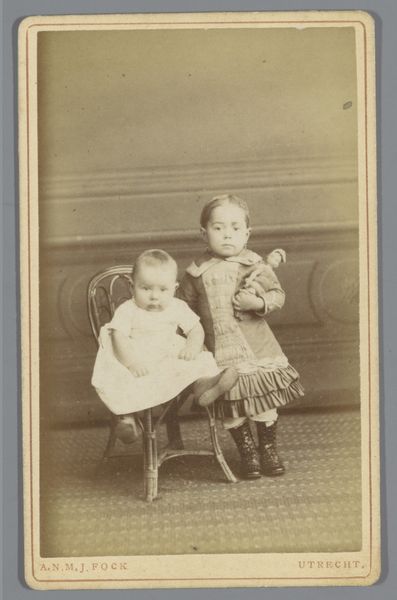
Groepsportret van Willy Moos met pijp in zijn mond, Else Wachenheimer-Moos met pop in haar armen en Arthur Moos met pijp in zijn hand als kinderen in zuid-Duitse klederdracht, tijdens carnaval 1899 Possibly 1899
0:00
0:00
photography
#
portrait
#
16_19th-century
#
german-expressionism
#
archive photography
#
photography
#
historical photography
#
19th century
#
genre-painting
Dimensions: height 165 mm, width 105 mm
Copyright: Rijks Museum: Open Domain
Curator: This historical photograph, possibly from 1899, is titled "Groepsportret van Willy Moos met pijp in zijn mond, Else Wachenheimer-Moos met pop in haar armen en Arthur Moos met pijp in zijn hand als kinderen in zuid-Duitse klederdracht, tijdens carnaval". The portrait captures the Moos children in Southern German traditional dress, likely during a carnival celebration. Editor: The immediate impression is… unsettling. There’s a precociousness to these children, a forced adultness in their clothing and props that feels decidedly strange through a modern lens. Curator: Indeed. Consider the pipes, miniature versions of adult affectations. What significance do they hold beyond mere costume? Carnival, after all, is about inverting norms, about brief sanctioned chaos. These children aren’t just dressed up; they are actively embodying an adult, masculine persona. Editor: Which takes on a sharp edge when we consider the wider societal context. Imperial Germany at the turn of the century was wrestling with identity, grappling with anxieties about modernity and tradition. The children in their "klederdracht" are being staged in a scene of invented folk culture, acting out the roles of the rooted Heimat against an urbanizing landscape. Curator: And the symbols become layered. The folk costume itself speaks of regional identity. It might be worth investigating precisely which region in southern Germany the clothing represents, to connect it to the family's origin or chosen symbolic home. Editor: The little girl clutching a doll feels the most poignant, an innocent entangled within performative traditions. Her tight grip suggests a desire for connection amidst a rigid staged reality. This highlights the intersectional space childhood occupies – innocence confronted with social performance and tradition. Curator: I’m intrigued by how they seem frozen. The clothing does provide them an avenue for expression but it looks limited by the strict pose. It also strikes me how portrait photography, particularly family portraits, has evolved into a different method for recording intimate personal moments. Editor: It's the uncanny blend of cultural symbolism, performative identity, and unsettling power dynamics embedded within this image. I think this photo reveals how constructs of nation, region, and family converge to create compelling, yet often complicated narratives around identity. Curator: Indeed. Looking through a psychological lens provides some important insight, adding another dimension to how families communicate through symbolism. The way the children use props, mimic behaviour and mirror clothing shows there is emotional weight in all of these images. Editor: Yes. Analyzing old photographs offers critical space for rethinking our approach to gender, performance, and heritage, reminding us of the continuous processes of constructing the very frameworks we still use today.
Comments
No comments
Be the first to comment and join the conversation on the ultimate creative platform.
